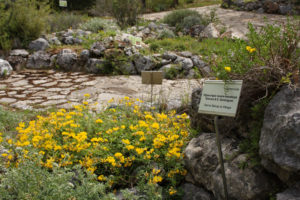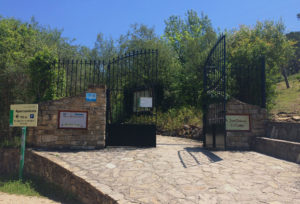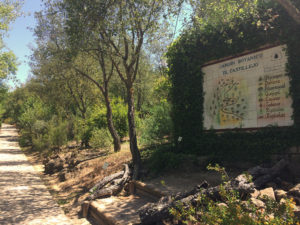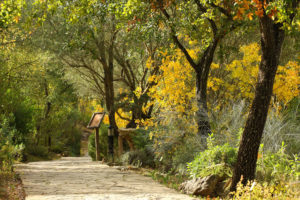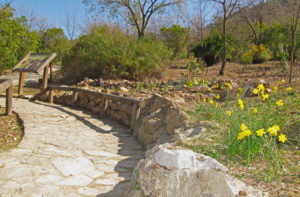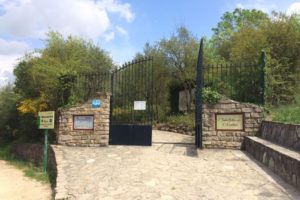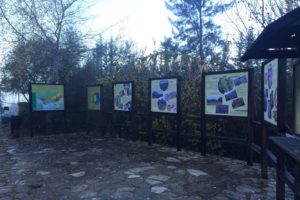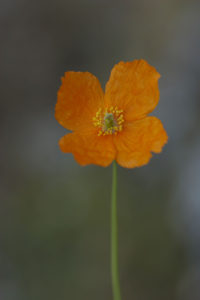El Castillejo Botanic Garden. RAJBEN

- Name: El Castillejo. RAJBEN (Andalusian Network of Botanic and Mycological Gardens)
- Address: Avenida El Castillejo s/n. El Bosque (Cádiz) SPAIN
El Castillejo Botanic Garden is located in El Bosque (Cádiz), it is part of Sierra de Grazalema Natural Park. - Phone: 697955245
- Website: http://www.juntadeandalucia.es/m
- Email: jbotanico.castillejo.cma@juntadeandalucia.es
- Opening hours: October 1st to April 30th: Tuesday to Sunday (10:00 – 16:00 h)
May 1st – 31st: Tuesday to Sunday (10:00 – 14:00 and 18:00 – 20:00 h)
Summer (June 1st to August 31st): Tuseday to Sunday (09:00 – 15:00 h)
September 1st – 31st: Tuesday to Sunday (10:00 – 14:00 and 18:00 – 20:00 h)
Closed: Mondays, except public holidays and January 1st, January 6th, December 25th, December 31st - Institution: Public
- Director: Spanish Regional Ministry of Environment and Territory (CMAOT)
- Number of Species:
521
- Conservation programmes: 1) Location and tracking of the flora taxa and the protected, threatened, endemic or rare fungus present in the Andalusian territory.
2) Collecting seeds and other propagules of the taxa object of study, intended to:
2.a) Developing protocols for their germination and establishment.
2.b) Representing the different botanic and mycological gardens.
2.c) Preserving the Andalusian Plant Gene Bank (BGVA).
2.d) Acting for the reintroduction and reinforcement of the population in the environment.
3) Representing the vegetation, flora and microflora that characterized the different Andalusian biogeographic areas.
4) Maintenance of the collections of genetic conservation and rescue.
5) Participation in the development of the Recovery Plans approved by the Regional Ministry of Environment and Territory of the Regional Government of Andalusia. Castillejo participates in the four plans currently approved: dunes, sandbanks and coastal cliffs, pteridophytes, Spanish fir and high peaks.
- Research Programs:
1) Collaboration with research centers, such as the CSIC, and regional and local universities, for the study of protected and threatened taxa present in the Andalusian community. The collections of the NET are a tool for the development of scientific studies, since they offer genetic material from places very remote in nature and collect diferent species in a single place in order to investigate more effectively. Research centers such as the CSIC, other botanical gardens, private Foundations, companies and different universities, rely on the equipment and the means offered by the Network for the development of projects framed in different subjects, among which some pest studies , Effect of herbivory, trials with special substrates or monitoring of invasive alien species.
2) Collaboration with the Spanish Society of Plant Conservation Biology (SEBICOP), in the Project SEFA (Monitoring of Threatened Flora Species and Special Protection in Spain). Consistent in the study on the status of different species included in the annexes of the Habitats Directive, the Spanish Catalog or LESPRE. From the Botanical Garden El Castillejo participates in the following of Silene mariana, Ornithogalum reverchonii and Spiranthes aestivalis, among others.
3) Permanent member of the Iberomacaronésica Association of Botanical Gardens - Education Programmes:
The educational lines developed are:
1) Programa Aldea: a program developed in collaboration with the Department of Education. Its main goal is to promote the comprehensive development of the educational initiatives for the preservation of natural resources and the promotion of sustainable development in the Andalusian educative community. The program aims at contributing to a society more environmental-friendly, fair and caring, that leads to a more comprehensive education and that relies on the four educational pillars proposed by UNESCO: Learn to know / Learn to do / Learn to be / Learn to live together.
2) Training courses for professionals in need of a technical education in the field of threatened flora.
3) Activities and workshops on different topics and aimed at all types of public interested in Andalusian flora values: photography workshops, activities on the use of traditional plants or the knowledge of different vegetable groups, etc.
4) Guided visits to know the contents of the different botanic gardens.
The Botanic Garden “El Castillejo” is located in the town of El Bosque, within the Natural Park “Sierra de Grazalema”, in the western area of the Subbaetic System. UNESCO declared this region a biosphere reserve in 1977, for its ecological values, its weather, and its geological specifities, as well as a Natural Park in 1984.
Country: Spain
The Botanic Garden “El Castillejo” is located in the town of El Bosque, within the Natural Park “Sierra de Grazalema”, in the western area of the Subbaetic System. UNESCO declared this region a biosphere reserve in 1977, for its ecological values, its weather, and its geological specifities, as well as a Natural Park in 1984.
The Botanic Garden “El Castillejo” represents the vegetation of the mountains of Ronda, which includes the “Sierra de Grazalema” and the “Sierra de Loja”, as well as the “Sierra de las Nieves”, “Sierra Bermeja” and the “Torcal de Antequera”, among many other natural spaces. This biogeographic sector, or natural province, is characterized by the presence of limestone rock, although there are other types of grounds, such as the peridotite. This contributes to the richness of the flora and the variety of endemic plants. Most plants belong to the category of the Mediterranean flora, characterized by the sclerophyll and xeromorphism, as a mechanism of adaptation to the summer drought. Thus, it predominates the sclerophyll Mediterranean forest, with evergreen leaves (cork tree, holm oak, wild olive tree, carob tree) and bushes rich in xerophytic flowers, common of dry weathers. Besides that more common Mediterranean flora, we find other Euro-Siberian species such as maples, yews and whitebeams, as well as relict taxa such as the Spanish fir, which only grows in the mountains of the provinces of Cádiz and Málaga.

